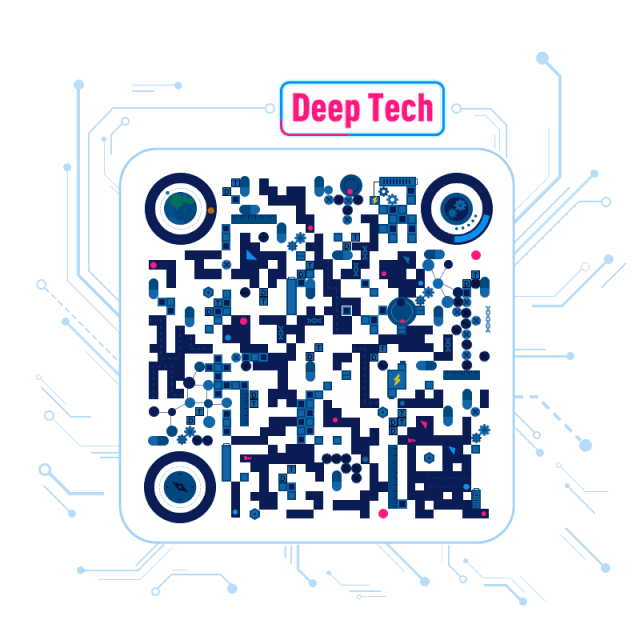
We have traditionally viewed Intel and Arm as the dominant players in the PC and server markets, and the mobile application domain, respectively. Although these companies have attempted to cross into each other’s territories in the past, they have not been particularly successful. However, at the 2018 Computex conference, “diversification” became the main theme.
Traditionally, Intel is a major player in the PC and server solutions market, but this time it did not focus much on these two primary products. Instead, it showcased exciting developments in quantum computing and cloud AI solutions that were not publicly displayed.
On the other hand, Arm has deviated from its previous focus. Prior to Computex, it had already announced new architectures, but these architectures are not aimed at the previously dominant mobile domain. Instead, they target PC computing and IoT terminal AI architectures, threatening the current market’s X86 architecture and independent AI chip suppliers. Arm’s Vice President Nandan Nayampally did not shy away from stating that future competitors could include Intel or NVIDIA.
Both major chip architecture companies are stepping away from their traditional paths, unafraid to challenge established domains that are difficult to shake, and even willing to tackle entirely new market technologies. This shift is largely due to both companies facing application development bottlenecks that have necessitated these strategies.
Strategies to Address Development Bottlenecks
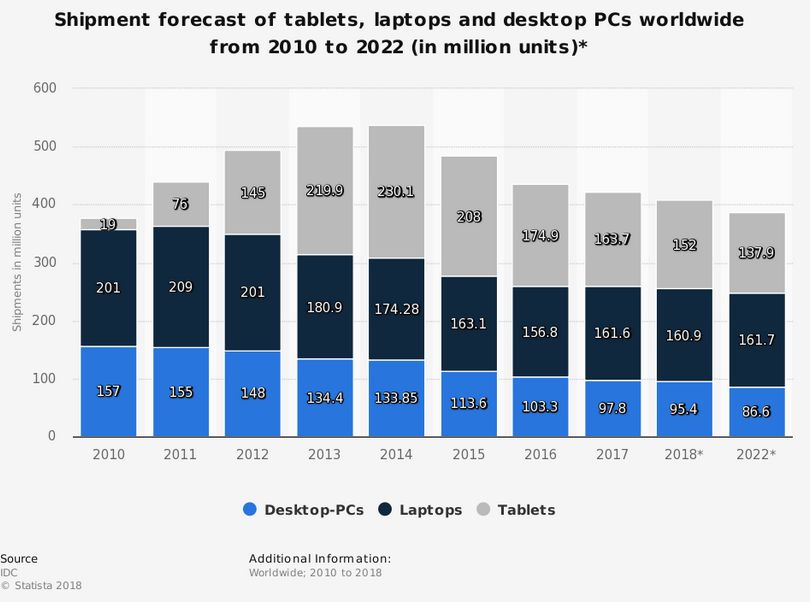
Image|The continuous decline of the PC market forces Intel to seek alternative paths
Intel has been stuck in a development quagmire in the traditional PC market for quite some time. Due to the annual decline in PC market shipments, maintaining performance without a drop has been quite challenging. Moreover, significant investments are required to sustain the development of process technologies and new architectures. If new applications are not introduced to expand the revenue base, it may become increasingly difficult to even cover the costs of maintaining technology. Additionally, Intel’s past failures in the mobile terminal market have significantly impacted its performance, making this strategic shift a last-ditch effort for Intel, with immense pressure to succeed.
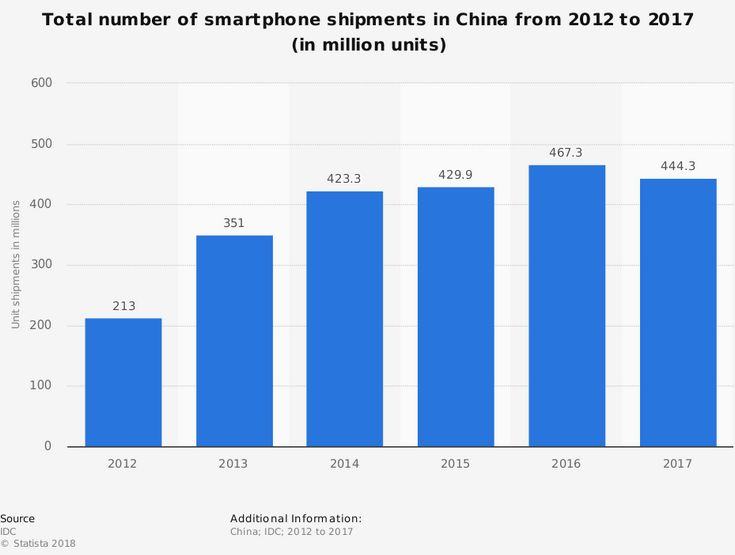
Image|The decline in smartphone shipments in China in 2017 serves as a wake-up call for Arm
As for Arm, while it holds a significant share in the mobile intelligent terminal market, it is also facing challenges similar to those in the PC market. Shipments have transitioned from growth to stability, and even entered a slight decline in the Chinese market. Furthermore, after being acquired by SoftBank, the much-touted IoT strategy has been overshadowed by the recent AI application boom, leading to concerns about how the IoT market will grow or how large it will ultimately become. Additionally, Arm’s entry into the PC market can be seen as an extension and complement to its mobile ecosystem and PC ecosystem, expanding the application space of the Arm architecture. Despite a significant increase in personnel over the past two years, the stagnation of mobile terminal licensing revenue and the lack of corresponding growth in IoT applications have placed Arm under considerable pressure. Although the establishment of Arm mini China has slightly alleviated financial strain while ensuring market presence, if the product landscape cannot be effectively expanded, coupled with challenges from new architectures like RISC-V, Arm’s future development remains a significant question mark. Thus, Intel and Arm’s recent product and technology strategies may seem like diversions, but they are actually necessary directions for survival.
Intel’s lackluster PC product line updates hide exciting AI and “room temperature quantum layout” behind the scenes.
While Intel announced its annual product updates at Computex this year, it essentially amounted to a routine squeeze of toothpaste, with the flagship Whiskey Lake and Amber Lake offering few attractive features, merely filling a gap in low-power products. Additionally, its 28-core high-performance platform, Arm’s three major AI solutions, simply filled the gaps from the past few years, transitioning from server platforms. The day after the announcement, it was overshadowed by AMD’s 32-core solution.
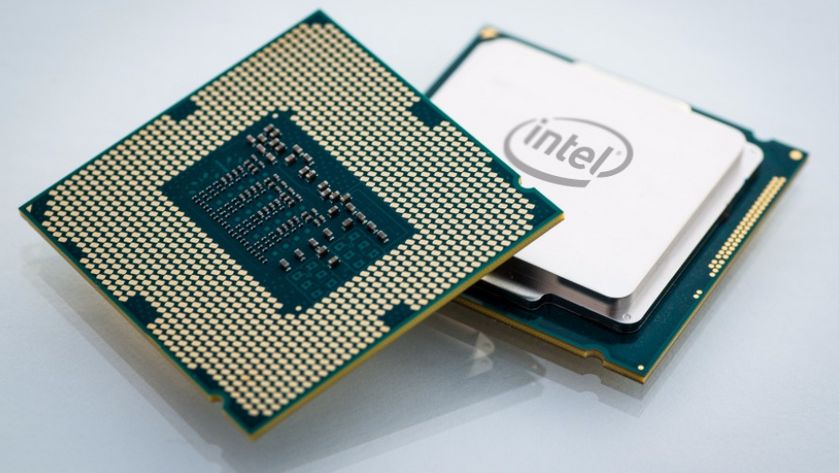
Image|Intel’s 28-core product from servers will transition to the consumer market but faces challenges from AMD’s 32-core solution.Because Intel has few tricks left in the PC industry, its recent marketing strategy has shifted towards future applications, including the construction of AI and 5G solutions. In recent years, Intel has made significant efforts in AI, including acquisitions of Movidus and Nervana. The former focuses on establishing an AI solution ecosystem for endpoints and edge computing, while the latter aims to create a powerful cloud computing ecosystem.
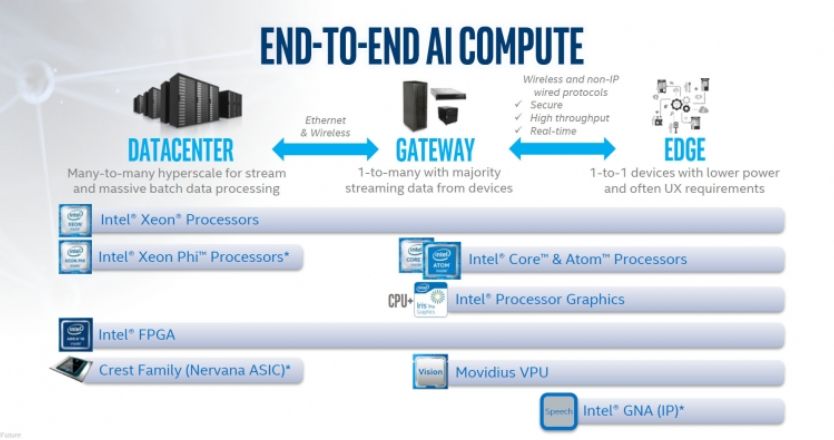 Image|Intel’s AI is also a complete solution from cloud to edge, similar to Arm’s platform planning. Currently, in the AI cloud computing domain, Intel has been significantly outpaced by NVIDIA, and the industry’s shift towards GPU-centric computing has raised concerns for Intel about the future replacement of CPUs. While CPUs still have many applications in servers that GPUs cannot replace, if the industry promotes the replacement of Intel’s X86 with other core architectures, as seen in the latest U.S. supercomputer architecture Summit using IBM’s Power 9 processing chip, it could be a fatal blow for Intel. To avoid the worst-case scenario, Intel is also promoting its own AI acceleration solutions. Since Intel does not have GPUs, it has opted for the FPGA architecture acquired from Altera, combining it with Intel’s X86 technology to launch the heterogeneous computing architecture Lake Crest.
Image|Intel’s AI is also a complete solution from cloud to edge, similar to Arm’s platform planning. Currently, in the AI cloud computing domain, Intel has been significantly outpaced by NVIDIA, and the industry’s shift towards GPU-centric computing has raised concerns for Intel about the future replacement of CPUs. While CPUs still have many applications in servers that GPUs cannot replace, if the industry promotes the replacement of Intel’s X86 with other core architectures, as seen in the latest U.S. supercomputer architecture Summit using IBM’s Power 9 processing chip, it could be a fatal blow for Intel. To avoid the worst-case scenario, Intel is also promoting its own AI acceleration solutions. Since Intel does not have GPUs, it has opted for the FPGA architecture acquired from Altera, combining it with Intel’s X86 technology to launch the heterogeneous computing architecture Lake Crest.
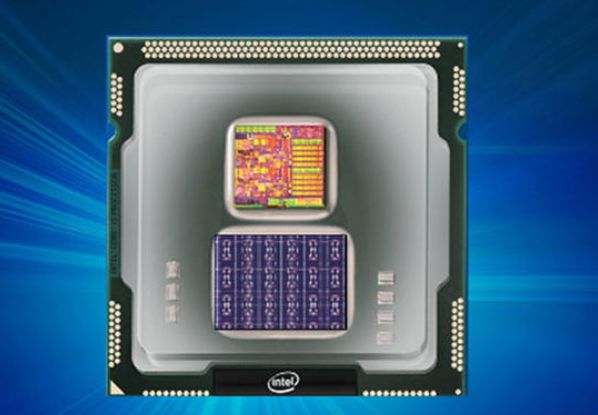
Image|The combination of CPU and FPGA in heterogeneous computing is Intel’s proposed answer for AI computing to counter NVIDIA’s GPU dominance. Lake Crest’s FPGA architecture demonstrates exceptional performance and flexibility in AI computing, both in training and inference, comparable to GPU architectures. Therefore, Lake Crest bears the heavy responsibility of countering NVIDIA’s GPU dominance and preventing competitors like Arm, IBM, and AMD from encroaching on the server CPU market. However, Lake Crest is only a small part of Intel’s extensive computing strategy; another key development project is the quantum computing chip based on semiconductor process technology.
Currently, mainstream quantum computing architectures are based on ultra-low temperature cooling superconducting methods to maintain stable quantum states. The former CEO of D-Wave Systems stated in an interview that room-temperature quantum technology is unlikely to emerge for a significant period. However, Intel has broken industry perceptions by successfully launching room-temperature semiconductor quantum computing chips.

Image|Intel has made rapid progress in superconducting quantum computing. After announcing the launch of a 17-qubit superconducting quantum chip last year, Intel continued its efforts, showcasing a 49-qubit testing chip at CES 2018. On the eve of Computex 2018, Intel announced the launch of a miniaturized spin qubit chip, making it one of the few successfully trial-produced semiconductor room-temperature quantum chips in the industry.
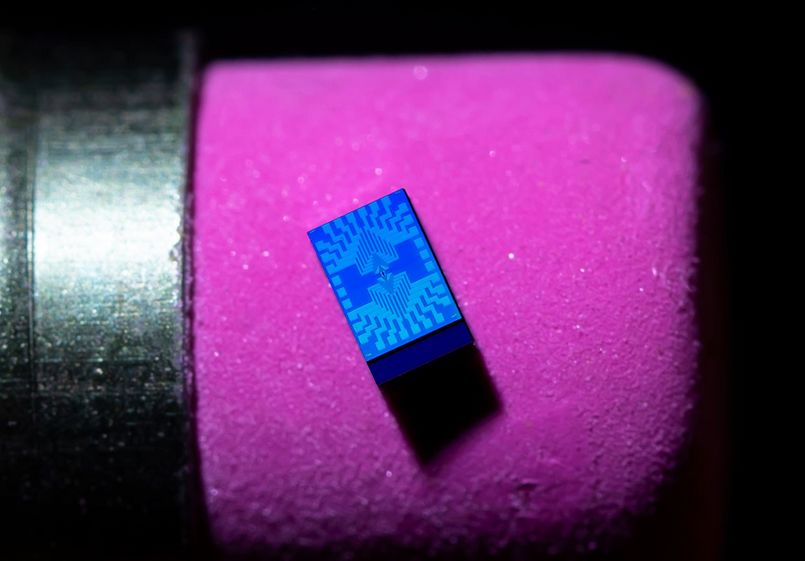
Image|Intel successfully trial-produced a semiconductor quantum chip with 26 qubits, significantly smaller than a fingernail. The semiconductor room-temperature quantum chip currently trial-produced by Intel has 26 qubits, and according to Intel’s Quantum Hardware Director Jim Clarke, the ultimate goal for this chip is to expand to over 1000 qubits. Currently, the chip is being produced at Intel’s D1D Fab plant in Oregon, utilizing a 50nm semiconductor manufacturing process. It is expected that future overall production capacity will far exceed that of existing mainstream superconducting qubits, not only advancing Intel’s technological layout in quantum chips but also improving future utilization rates of its own wafer fabrication plants. Another benefit of adopting semiconductor quantum architecture is the potential for parallel multi-chip configurations to achieve extremely high-scale qubit computing architectures. The goal is to aim for a super-high scale of 1 million qubits, with hopes of achieving this within the next ten years.
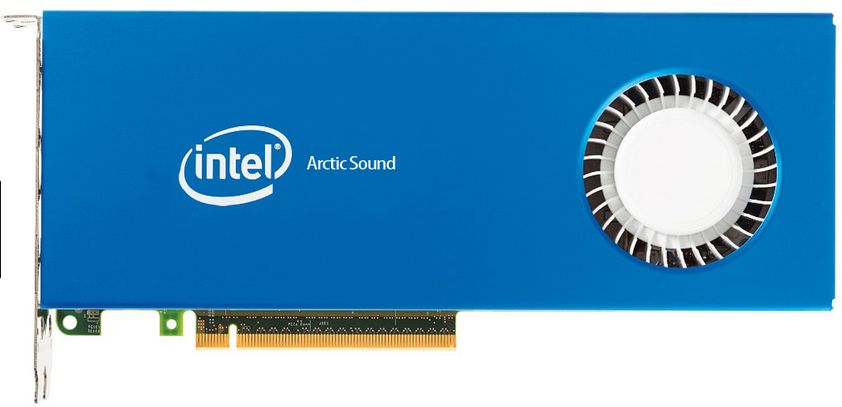
Image|Intel’s other diversion is the announcement of its entry into the independent GPU market, having poached several key players from AMD.
Intel actually has another diversion, which is the development of its GPU business. Intel plans to launch its own independent GPU chip in 2020, challenging market leaders including NVIDIA and AMD. This independent GPU targets both professional and consumer graphics markets and may also aim at areas like AI computing. To this end, Intel has poached Chief Architect Raja Koduri and former Marketing Director Chris Hook from AMD, establishing a GPU department. According to internal sources, its trial GPU architecture has largely been determined and testing has begun. Diversifying chip and application layouts is not only to ensure Intel retains a foothold in various computing domains but also serves another important purpose: to consume the increased production capacity resulting from future wafer fabrication process developments. Sufficient production scale is required to effectively spread costs and allow for further advancements in chip manufacturing technology, especially as TSMC has entered mass production at 7nm while Intel’s primary processes remain at 14nm. While Intel’s 10nm technology can theoretically compete with TSMC’s 7nm in terms of technical characteristics, actual mass production will take some time. This time lag has caused Intel to transition from a semiconductor manufacturing leader to a follower; if it cannot catch up quickly, it may impact the competitiveness of all future computing products.
Arm attempts to break into the PC field again and rapidly advances in AI applications.
Arm has long coveted the PC market. In 2012, it collaborated with Microsoft to launch a tablet based on the Windows RT system, using NVIDIA’s Tegra 3 chip based on the Cortex A9 multi-core architecture, which was one of the most powerful products in the Arm architecture at the time.
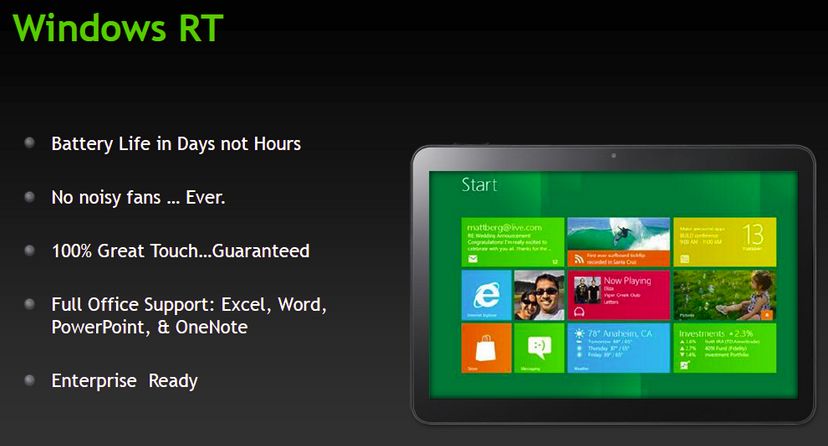
Image|The initial Windows RT launch created a huge buzz, but the actual performance was dismal, forcing Microsoft to rethink the positioning of Windows on Arm. However, this product faced complete failure. The reasons are primarily several. First, Microsoft’s Windows RT did not support traditional Windows desktop programs, and Microsoft created the Metro desktop, which was theoretically more suitable for touch operations. However, the operation logic of the Metro desktop was poor, making it unacceptable to users accustomed to iOS and Android systems. Ultimately, this led to developers rejecting the Metro desktop, and Windows RT lacked third-party applications, failing to attract consumers. Secondly, while the Tegra 3 solution was indeed the most powerful Arm architecture, its actual performance still fell far below Intel’s lowest-end mobile processors, leading to extremely poor user experience with Windows RT in terms of system and application execution smoothness. Learning from past mistakes, Arm has made ample preparations in terms of performance for its new Windows on Arm platform. Of course, as an early development of Windows on Arm, it is based on Qualcomm’s modified Arm architecture Snapdragon 835/845/850, which is slightly weaker but exhibits better power consumption and GPU performance than standard Arm architecture. To support the further development of Windows on Arm, Arm has introduced the new Cortex A-76 architecture, claiming to have performance comparable to standard laptop levels, with power consumption significantly better than Intel’s architecture. Although the Cortex-A76 has just been launched, Qualcomm has already announced that the next-generation Windows on Arm processing chip Snapdragon 1000 will adopt this architecture, expected to bring significant performance improvements, potentially rivaling Intel’s mainstream CPU solutions. In another key area, namely AI, following the announcement of Project Trillium earlier this year, Arm finally revealed more details about its AI solutions at Computex 2018. In addition to the previously mentioned collaborative computing capabilities of CPU and GPU for machine learning, it also introducedindependent AI chip IPs.

Image|Arm’s three major AI solutions fill the gaps from the past few years.These IPs include three main categories: machine learning processors, visual recognition processors, and neural network SDKs.
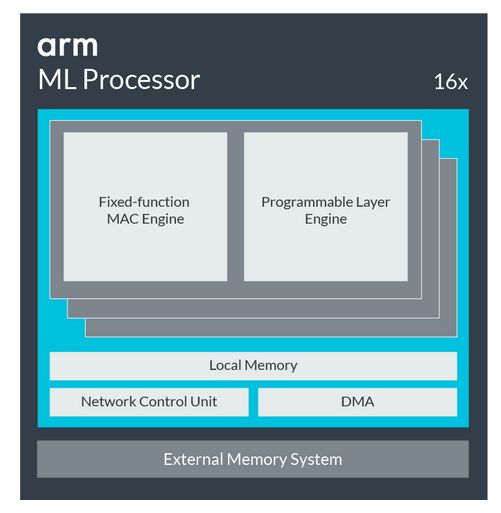
Image|The machine learning processor can be scaled up to 16 core units, theoretically achieving performance levels comparable to mainstream AI server computing platforms. The ML processor can achieve an operational performance of 4.6TOPs at standard scale under a 7nm process, with energy efficiency reaching 3TOPs per watt, making it quite competitive. Arm emphasizes that its architectures are scalable, meaning that clients can expand the scale to the desired performance level. Of course, increasing the scale also means a corresponding increase in power consumption and costs. While Arm emphasizes its scalability, it remains cautious when asked whether it can scale to levels comparable to mainstream GPU architectures used for cloud AI computing.

Image|The visual recognition processor can respond in real-time to various object recognition scenarios and can collaborate with other computing architectures for local processing. The visual recognition processor, previously mentioned in Project Trillium, utilizes optimized algorithms and circuit designs to achieve top-tier area efficiency, while also meeting mainstream visual recognition computing demands. Currently, this chip can perform real-time object detection at 60 frames per second in 1080P, with object sizes ranging from 50*60 pixels to full frame, and there is no limit to the number of objects in the same frame. Moreover, this visual recognition processor can be combined with CPUs, GPUs, or Arm’s machine learning processors to enhance edge computing capabilities, reducing the computational burden on the server side.
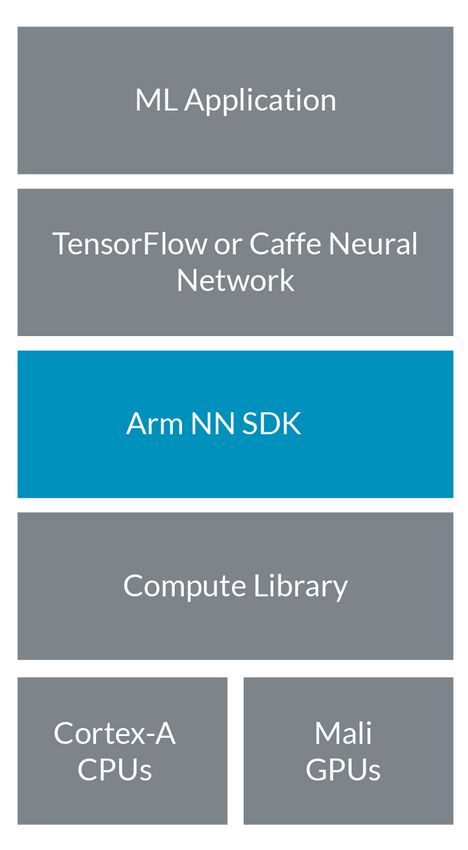
Image|The neural network SDK paves the way for executing individual neural network frameworks on Arm architecture cores, allowing developers to seamlessly run mainstream AI applications on Arm platforms. Finally, the neural network SDK claims to support mainstream neural network frameworks and facilitate high-efficiency conversion, enabling seamless execution on Arm architecture CPUs and GPUs without requiring program modifications. This is achieved through the neural network execution layer developed by Arm, eliminating the need for clients to redevelop conversion tools. Through these architectures, Arm has finally filled the gaps in the AI market over the past few years, and its proposed architectures are sufficient to meet the demands of nearly all application scenarios, including high-end computing platforms like servers. Arm confidently states that the ecosystem is the most crucial aspect of all computing platforms; even if an individual solution is powerful, it cannot meet customer needs if it lacks a collaborative ecosystem, leading to inevitable replacement by solutions with a complete ecosystem over time.
-End-

